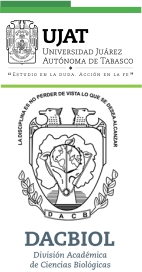EVALUACIÓN DE LA PESQUERÍA DEL ROBALO BLANCO Centropomus undecimalis (PERCIFORMES: CENTROPOMIDAE), TABASCO, MÉXICO
DOI:
https://doi.org/10.19136/kuxulkab.a18n34.185Abstract
El robalo blanco (Centropomus undecimalis) es una especie demersal con característica protándrica hermafrodita y hábitos diadrómicos. Se distribuye desde el norte de Florida E.U.A., hasta el sur de Río de Janeiro, Brasil; en el Golfo de México, es abundante en los estados de Tamaulipas, Veracruz y Tabasco. En su área de distribución, el robalo blanco presenta alta importancia comercial y deportiva, esto debido a sus características alimenticias, abundancia, alto valor en el mercado local y regional, así como a la facilidad de obtenerlo por parte de las comunidades pesqueras. En los últimos diez años, el incremento de la demanda en el consumo regional y nacional, así como la modificación de sus hábitats, ha causado que sus niveles de explotación sean altos en el Golfo de México, reduciendo las tallas de captura y la captura por unidad de esfuerzo.Downloads
References
Arreguín, F., Sánchez, J. Flores, H.D. Ramos, M.J. Sánchez, G.P. and A. Yáñez-Arancibia. 1999. Stock-Recruitment Relationships: A scientific Challenge to Support Fisheries Management in the Campeche Bank, Mexico. Pp. 79-97. In: Kumpf H, Steidinger K, Sherman K (Ed.). The Gulf of Mexico Large Marine Ecosystem : Assessment, Sustainability and Management. Blackwell Science. Inc. Malden, USA. Pp: 255-280.
Brennan, N.P., Meaghan, C.D. and M.L. Kenneth. 2006. Predator-free enclosures improve postrelease survival of stocked common snook. Journal of Experimental Marine Biology and Ecology, 335: 302-311
Caballero, C.V. 2003. Estudio biológico pesquero del robalo Centropomus undecimalis en el Suroeste de Campeche. Tesis de Grado. Universidad Nacional Autónoma de México, Distrito Federal. 71 p.
Cervantes-Hernández, M.I., Gallardo-Berumen, S., Ramos-Cruz, M.A., Gómez-Ponce, A. y G. Gracia. 2008. Análisis de las temporadas de veda en la explotación marina de camarones del Golfo de Tehuantepec, México. Revista de Biología Marina y Oceanografía, 43(2): 285-294
Cervantes-Hernández, P., Ramos-Cruz, S. y G.A. Gracia. 2006. Evaluación del estado de la pesquería del camarón en el Golfo de Tehuantepec. Hidrobiológica, 16(3): 223-239
Chien-Hsiung, W. 2004. Improvement of the Schaefer model and its application. In: 17th Meeting of the starding committee on tuna and billfish. Institute of Oceanography National Taiwan University, Tapei, Taiwan, Pp: 1-11.
Del Monte-Luna, P., Guzmán-Jiménez, G., Moncayo-Estrada, R., Sánchez-González, S. y A. Ayala-Cortés. 2001. Máximo rendimiento sostenible y esfuerzo óptimo de pesca del huachinango (Lutjanus peru) en la Cruz Huanacaxtle, Nayarit, México. Ciencia Pesquera, 14: 159-164
Espinoza-Pérez, H. y A. Daza Zepeda. 2005. Peces. Cap. 10: 225-240. En: Álvarez, F. Bueno J. & Santiago, S. (Eds.). Biodiversidad del Estado de Tabasco. Instituto de Biología. UNAM-CONABIO. México. 386 p.
Fox, W.W. 1970. An exponential yield model for optimizing exploited fish populations. Transactions of the American Fisheries Society, 99: 80-88
Gracia, A. 1997. Pesquería artesanal del camarón. En: Flores-Hernández, D., Sánchez-Gil, P., Seijo, J. C. y A. Arreguín-Sánchez. (Ed.). Análisis y diagnóstico de los recursos pesqueros críticos del Golfo de México. Universidad Autónoma de Campeche, Campeche. 173 p.
Grimes, C.B. 2001. Fishery production and the Mississippi river discharge. Fisheries, 26(8): 17-26
Hernández, A. and W. Kempton. 2003. Changes in fisheries management in Mexico: Effects of increasing scientific input and public participation. Ocean & Coastal Management, 46: 507-526
Hilborn, R. and C.J. Walter. 1992. Quantitative fisheries stock assessment. Choice, dynamics and uncertainty. Chapman & Hall, New York, 550 p.
Kendall, M.G. 1984. Time series. Oxford University Press, New York, 542 p.
Lowerre-Barbieri , S.K., Vose, F.E. and J.A. Whittington. 2003. Catch and release fishing on a spawning aggregation of common snook: does it affect reproductive output. Transactions of the American Fisheries Society, 132: 940-952
Maunder, M.N. 2003. Is it time to discard the Schaefer model from the stock assessment scientis's toolbox?. Fisheries Research, 61: 145-149
Morales-Bojórquez, E., López-Martínez, J. and S. Hernández-Vázquez. 2001. Dynamic Match-Effort Model For Browns Farfantepenaeus californiensis (Holmes) Forms Gulf of California. México. Ciencias Marinas, 27(1): 105-124
Muhlia, A., Martínez, J.A., Rodríguez, J., Guerrero, D. y F. Gutiérrez. 1994. Desarrollo científico y tecnológico del cultivo de robalo. Secretaría de Pesca, México, 65 p.
Muller, R.G. and R.G. Taylor. 2006. The 2006 stock assessment update of common snook, Centropomus undecimalis. Florida Marine Research Institute, St. Petersburg, Florida, 137 p.
Ortega-García, S., Llich-Belda, D. and P. Arenas-Fuentes. 2003. Spatial seasonal an anual fluctuation in relative abundance of yellowfin tuna in the eastern Pacific Ocean during 1984-1990 based on fisheries CPUR analysis. Bulletin of the Marine Science, 71(3): 613-628
Perera-García, M.A., Mendoza-Carranza, M. y S. Páramo-Delgadillo. 2008. Dinámica reproductiva y poblacional del robalo Centropomus undecimalis, en Barra San Pedro, Centla, México. Universidad y Ciencia, 24(1): 49-59
Perera-García, M.A., Mendoza-Carranza, M., Contreras-Sánchez W.M., Huerta-Ortíz M. y E. Pérez-Sánchez. 2011. Reproductive biology of common snook Centropomus undecimalis (Perciformes: Centropomidae) in two tropical habitats. Revista de Biología Tropical, 59(2): 669-681
Quiroga, B.C. y C.F. Solís. 1999. Estado actual de la pesquería de robalo en México, Pesquerías Relevantes de México. INP. SEMARNAP. (4): 559-578.
Ramos-Cruz, S., Sánchez-Meraz, B., Carrasco-Ayuso, F. y P. Cervantes-Hernández. 2006. Estimación de la tasa de mortalidad natural de Farfantepenaeus californiensis (Holmes, 1900) y Litopenaeus vannamei (Boone, 1931) en la zona costera de Golfo de Tehuantepec, México. Revista de Biología Marina y Oceanografía, 41(2): 221-229
Rivas, L.R. 1986. Sistematic review of the perciform fishes of the genus Centropomus. Copeia, 3: 579-611.
Salas, S. and D. Gaertner. 2004. The behavioral dynamics of fishers: management implications. Fish and Fisheries, 5: 153-167
Schaefer, M.B. 1954. Some aspects of the dynamics of populations important to the management of the commercial marine fisheries. Bulletin Inter-American Tropical Tuna Commission, 1(2): 27-56
Schnute, J. 1977. Improved estimates from the Schaefer production model: theoretical considerations. Journal of the Fisheries Research Board of Canada, 34: 583-603
Stevens, P.W., Blewett, D.A. and G.R. Poulakis. 2007. Variable habitat use by juveniles common snook, Centropomus undecimalis (Pisces: Centropomidae): Applying a life-history model in a southwest Florida estuary. Bulletin of Marine Science, 80(1): 93-108
Tavares, L.E.R. and J.L. Luque. 2004. Community ecology of metazoan parasites of later juvenile common snook Centropomus undecimalis (Osteichthyes: Centropomidae) from the coastal zone of the State of Rio de Janeiro, Brazil. Brazil Journal Biology, 64(3A): 523-529
Taylor, G.R., Wittington, J.A. and H.J. Grier. 2000. Age growth, maduration and protandric sex reversal in the common snook Centropomus undecimalis, from the east and west coasts of south Florida. Fishery Bulletin, 98: 612-624
Terrence, J.Q. and R.B. Deriso. 1999. Quantitative fish dynamics. Oxford University Press, 542 p.
Williams, E.H. and H. Prager. 2002. Comparison of equilibrium and non-equilibrium estimators for the generalized production model. Canadian Journal of Fisheries and Aquatic Sciences, 59: 1533-1552
Zarza-Meza, A.E., Villalobos, J.B., Vásquez, C.P. y P.T. Álvarez. 2006. Cultivo experimental del robalo Centropomus undecimalis (Bloch, 1792) y Chucumite Centropomus parallelus (Poey, 1860) (Perciformes: Centropomidae) en agua dulce en un estanque de concreto en Alvarado, Veracruz, México. Veterinaria México, 37(3): 327-333
Downloads
Published
Issue
Section
License
Los autores que publiquen en Kuxulkab' aceptan las siguientes condiciones como política de acceso abierto:
1. Que conservan los derechos de autor y ceden a la revista el derecho de la primera publicación, con el trabajo registrado con la licencia de atribucion de "Creative Commons", que permite a terceros utilizar lo publicado siempre que mencionen la autoría del trabajo y a la primera publicación en esta revista.
2. El autor puede realizar otros acuerdos contractuales independientes o adicionales para la distribución no exclusiva de la versión del artículo publicado en esta revista, como por ejemplo incluirlo en un repositorio institucional o publicarlo en un libro, siempre que se indique claramente que el trabajo se publicó por primera vez en esta revista.












